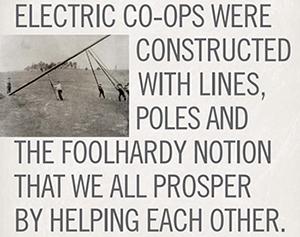
Today, nearly a thousand local cooperatives provide electricity to the inhabitants of around three-quarters of the landmass of the United States. They have formed larger co-ops in order to build and manage their own power plants. They’ve formed cooperative banks to finance new projects, lessening the need for public loans. Together with the rural phone co-ops that emerged in the same period, some electric co-ops are now bringing broadband internet service to underserved areas. Some have also become leaders in transitioning to renewable energy sources.
And all along, the basic model hasn’t changed: The co-ops are still owned and governed by the people they serve. Members typically get ballots for board members with their bills. It’s not a perfect system, and far too many co-ops have tolerated low election turnouts, entrenched board members, and bylaws designed to make change difficult. Still, co-ops have strong incentives to keep rates affordable, and any excess earnings get reinvested in the communities from which they came.
Electric cooperatives have also garnered remarkably bipartisan support over the years. Although spurred and nurtured early on by Democratic presidents, for decades now, these fixtures of the red state economy have had GOP lawmakers among their chief advocates, including former Indiana governor and vice president-elect Mike Pence. And it’s easy to see why: Co-ops are practical businesses that foster strong communities and local control. Because they’re regulated by their member-owners, in most cases they require significantly less oversight from government bureaucracies, if any.
Read the rest at YES! Magazine
Go to the GEO front page

Add new comment